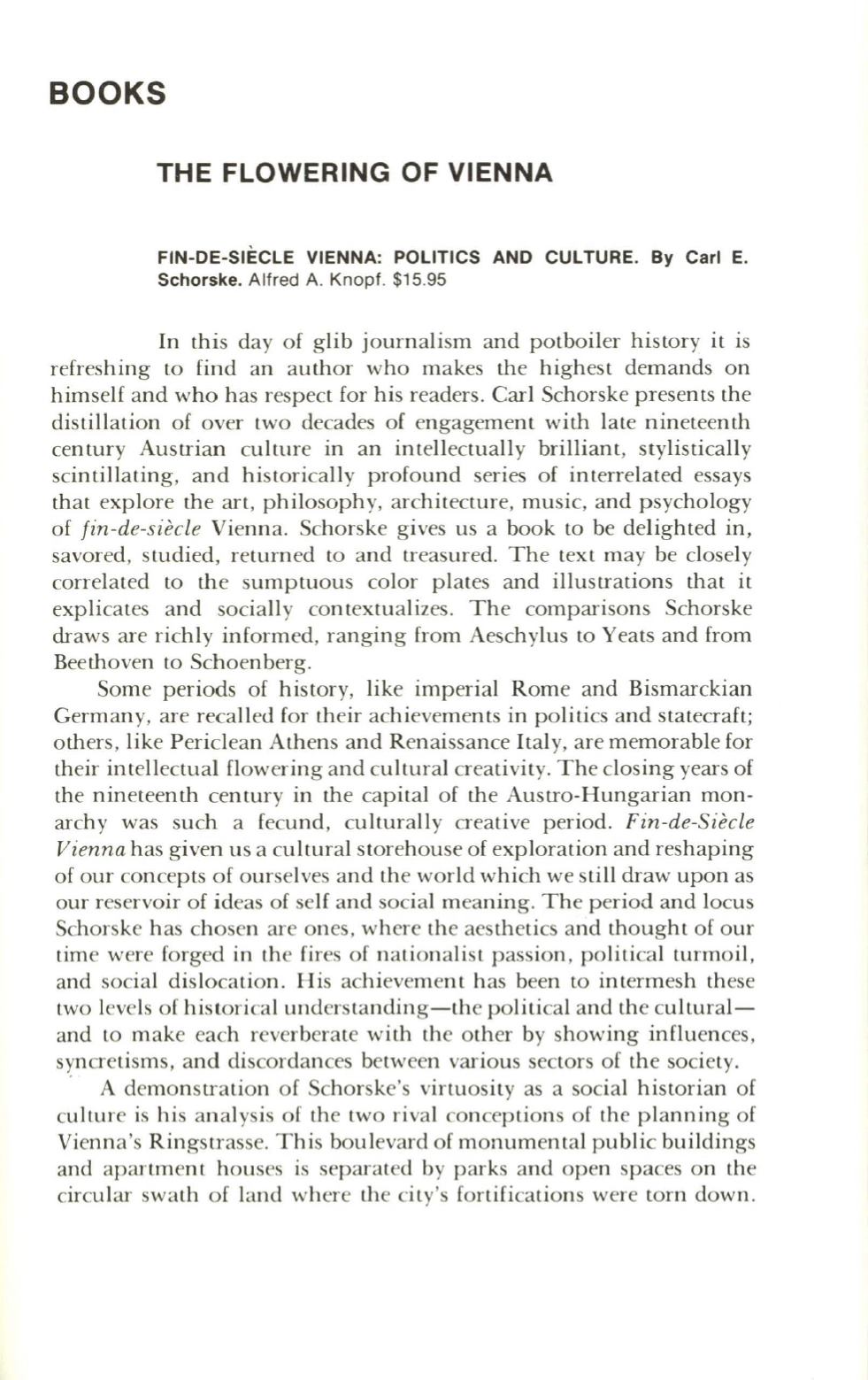
BOOKS
THE FLOWERING OF VIENNA
FIN-DE-SIECLE VIENNA: POLITICS AND CULTURE.
By
Carl
E.
Schorske. Alfred A. Knopf. $15.95
In this day of glib journalism and potboiler history it is
refreshing to find an author who makes the highest demands on
himself and who has respect for his readers. Carl Schorske presents the
distillation of over two decades of engagement with late nineteenth
century Austrian culture in an intellectually brilliant, stylistically
scintillating, and historically profound series of interrelated essays
that explore the art, philosophy, architecture, music, and psychology
of
fin-de-siecle
Vienna. Schorske gives us a book to be delighted in,
savored, studied, returned
to
and treasured. The text may be closely
correlated to the sumptuous color plates and illustrations that it
explicates and socially contextualizes. The comparisons Schorske
draws are richly informed, ranging from Aeschylus to Yeats and from
Beethoven to Schoenberg.
Some periods of history, like imperial Rome and Bismarckian
Germany, are recalled for their achievements in politics and statecraft;
others, like Periclean Athens and Renaissance Italy, are memorable for
their intellectual flowering and cultural creativity. The closing years of
the nineteenth century in the capital of the Austro-Hungarian mon–
archy was such a fecund, culturally creative period.
Fin-de-Siecle
Vienna
has given us a cultural storehouse of exp loration and reshaping
of our concepts of ourselves and the world which we still draw upon as
our reservoir of ideas of self and social meaning. The period and locus
Schorske has chosen are ones, where the aesthetics and thought of our
time were forged in the fires of nationalist passion, political turmoil,
and social dislocation. His achievement has been to intermesh these
two levels of historica l understanding-the political and the cultural–
and
to
make each reverberate with the other by showing influences,
syncretisms, and discordances between various sectors of the society.
. A demonstration of Schorske's virtuosity as a social historian of
culture is his analysis of the two rival conceptions of the planning of
Vienna's Ringstrasse. This bou levard of monumenta l public buildings
and apartment houses is separated by parks and open spaces on the
circular swath of land where the city's fortifications were torn down.


